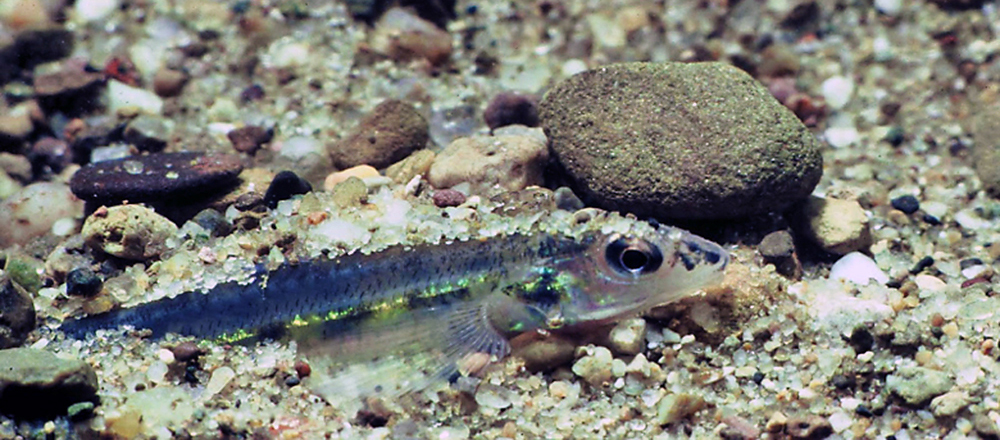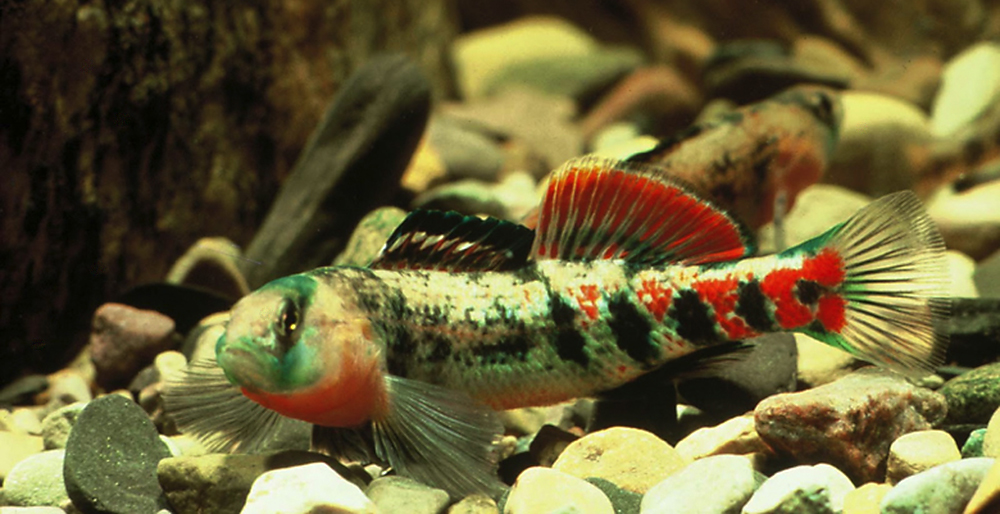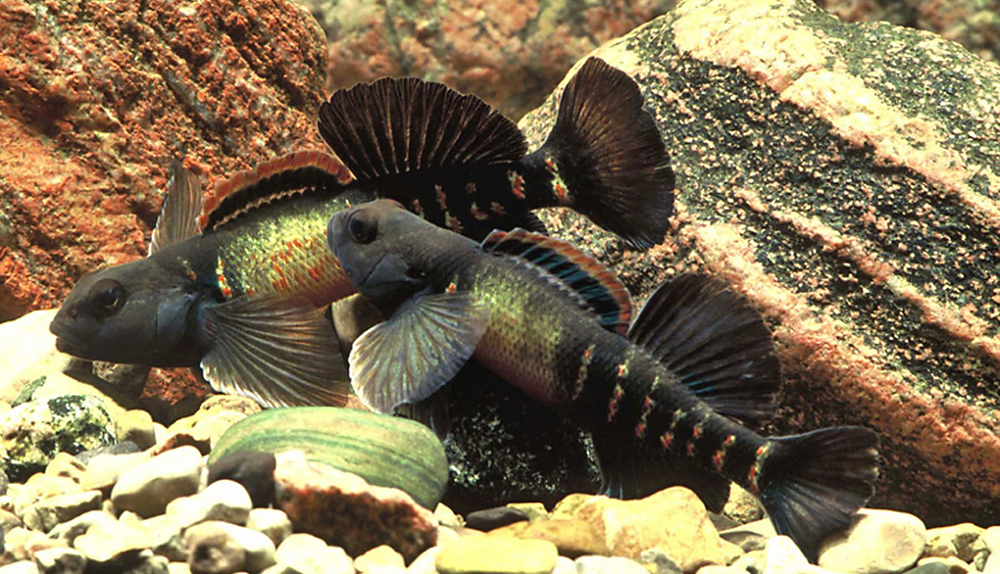ANDREW BOOSE
Aquatic Ecologist

As central Ohio streams warm just a little, a cacophony of color plays out under the rapids, riffles, runs and pools. The fish known as darters begin their annual ritual of mating. The male darter color begins to deepen in an attempt to catch the eye of a female. Mac Albin, our past Aquatic Ecologist, best described the darters as the “warblers of the underwater world.”

The blue-breast males show deep blue blacks, the orange throat of the head waters show brilliant oranges and vibrant yellows while the banded and greensides’ green could outshine an emerald. The tippecanoe, our state’s smallest fish, is clad in what looks like a brand-new copper penny outlined with orange.
Twenty years ago, darters were just coming back to our streams as water quality improved. Now there are 15 of them listed in the parks and… Oh! Wait a minute! This just in! Thanks to Brian Zimmerman, the Research Associate with Stream and River Ecology (STRIVE) Lab OSU, and their state-wide non-game fish reintroduction of fish extirpated from the area, we now have 16 darter species. The work of Brian and his team has successfully reared Iowa darters in a few of our ponds.
BUT WAIT! There’s still more! This just in! As this article was being written, another brand-new native fish for the Metro Parks has been discovered—the eastern sand darter. So now we have 17 species of darters in Metro Parks. While not as spectacularly colored, this slender darter lives up to its name in the sand bars of larger creeks. The latest new species was found by Brian and his team in Big Walnut Creek on land acquired by Metro Parks in 2020. They were collecting darters to be relocated to the Stillwater River, where the variegate darter has been absent since the 1800s.

The Resource Management Team gets to see all this color because of our studies of water quality in Metro Parks streams. We sample streams to track fish populations, of which the darters are among the species that react most to changes in water quality. We also use the services of outside researchers from various agencies to collect data on the rise or decline of fish species.
Here are the 17 species of darter recorded in the Metro Parks:
Dusky Darter
Blackside Darter
Slenderhead Darter
Logperch
Eastern Sand Darter
Johnny Darter
Greenside Darter
Banded Darter
Variegated Dater
Spotted Darter
Bluebreast Darter
Tippecanoe Darter
Rainbow Darter
Orangethroat Darter
Fantail Darter
Least Darter
Iowa Darter (reintroduced)
Correction
The original version of this article (May 2022) reported 18 species of darter as the current number recorded in the parks. This included a duplicate count of the sand darter, which had been recorded in Big Darby Creek previously, but in a part of Big Darby Creek outside the Metro Parks.

Thank you for your research and sharing! These photographs really important to motivate me to actually bring my binoculars and go wading or kayaking. Great job, staff /Battelle Darby Creek!